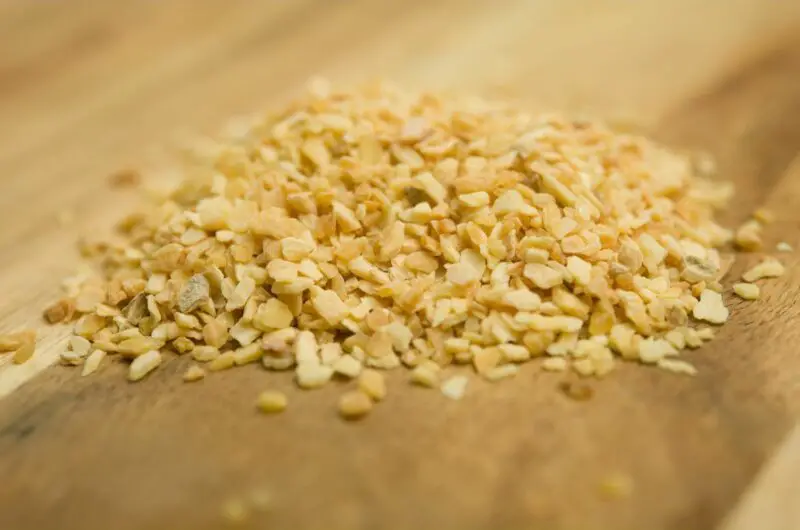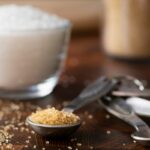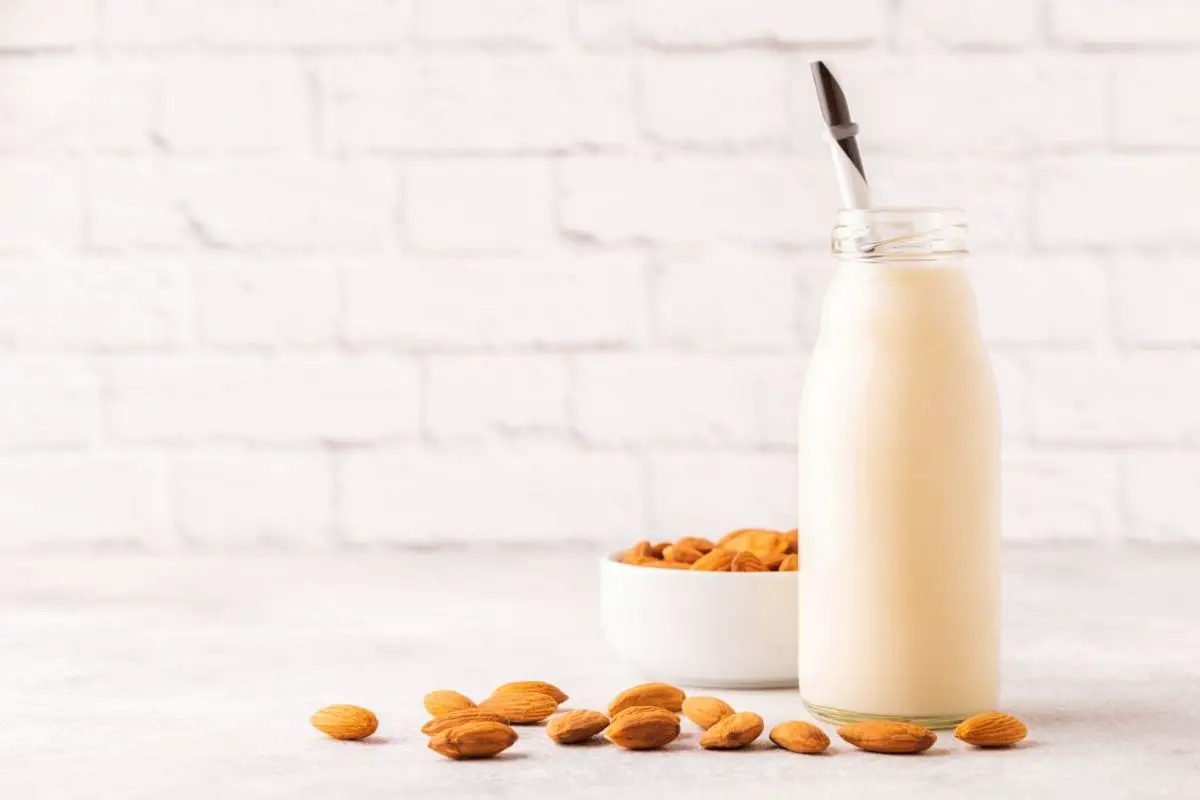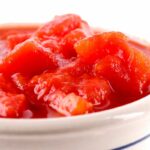Garlic is my one and only — If it’s not in a recipe, I add it; if the recipe calls for a single clove, I add three. It’s a stinky, yet wholly satisfying way to live… besides the peeling and chopping of fresh garlic, that is.
Garlic, I love you, but my gosh are you tricky to prepare. And don’t give me the whole if you can’t handle me at my worst, you don’t deserve me at my best spiel. I shouldn’t have to put up with your “worst”… in fact, I don’t have to, for the miracle that is granulated garlic exists!
Yep, granulated garlic transforms a messy preparation process into a graceful sprinkle — Woo! But what happens when you run out of this culinary fairy dust? Is it time to step outside your garlicky comfort zone, or can scrumptious substitutions be made?
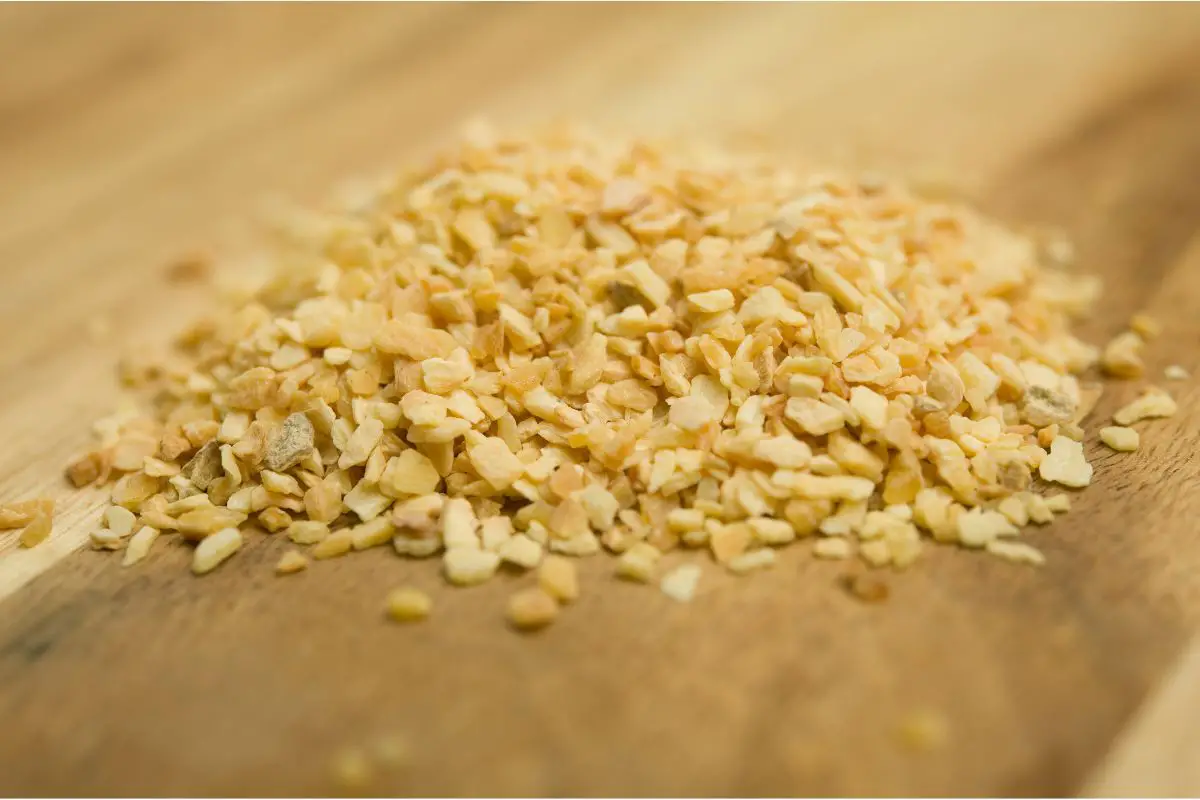
What Exactly Is Granulated Garlic & How Is It Made?
Granulated garlic is exactly what it sounds like; it’s garlic that has been pre-granulated and stored in a glass or plastic pot for easy use when whipping up a tasty dish.
As is the case with any dry herb, it’s not quite as potent as the fresh version, but it still packs a mighty punch, especially when you get a little overzealous and pour more than you meant to into your meal.
This form of garlic is an essential component of blends such as Cajun seasoning and Italian herbs, but it’s by no means restricted to these concoctions.
Granulated garlic will go down a storm in almost any savory dish, and even a few sweet dishes. It can be used to mouthwatering effect in rubs, can give roasted or broiled veggies a flavorful coat, will kick a pasta sauce up a million notches, and can zhuzh up any salad dressing.
In short, you can sprinkle some granulated garlic in pretty much any dish (and I do), and it will augment rather than detract from the overall flavor.
As for how it’s made, it all starts with the drying of cloves. Once sufficiently desiccated, the cloves are coarsely grated to form a semi-fine powder. And voilà; you have granulated garlic
Running out of granulated garlic is always a tragedy, but thankfully, we have the following five options to fall back on.
1. Garlic Powder
Garlic powder is exactly the same as granulated garlic but for the fact it’s been ground down into much finer particles, which is why I’m listing it up top.
There’s nothing added or taken away, it’s not prepared any differently other than the grinding, it’s just garlicky goodness in a convenient powder form for ease of application.
Like granulated garlic, the garlic cloves used for garlic powder are dehydrated before being broken down into the final product, meaning it’s not quite as potent as a fresh clove, but more than powerful enough.
It can be used for all the same meals and in all the same ways as garlic granules. In fact, I actually prefer garlic powder for making meat/tofu rubs because it adheres better and mixes into a blend more completely.
Top tip, work some garlic powder into a bread dough and prepare for a godly delight, especially if you mix in some complementary ingredients such as olives or rosemary.
You can pick some of this stuff up at most grocery stores and supermarkets. It’ll be in the herbs and spices aisle and is typically in a small glass, plastic, or cardboard pot.
It should be good for about three years, but make sure to keep it in a cool, dry location, otherwise, you risk the dreaded clumping. Is this a huge deal? No, but you’ll have to pry the granules loose with a knife, which isn’t all that safe or convenient.
2. Garlic Salt
In its purest form, garlic salt is simply particulate garlic (somewhere between granules and powder in fineness) and salt. However, oftentimes, it will be a more complicated blend comprising extras such as onion powder and paprika.
While it’s a dynamite product to have in your dry store for when you need it and can absolutely fill in for granulated garlic to a degree, garlic salt comes with a few caveats.
Firstly, the salt content can throw a spanner in the works if you’re not used to this blend. In an attempt to boost the garlic factor of your dish, you’ll almost certainly add too much salt — It’s basically a rite of passage.
Now, on its own, it might not completely ruin the meal, but the sodium contributions of stock and other ingredients can easily tip the scales, so proceed with caution.
You’ll also want to keep an eye out for any of those sneaky extra flavorings, as they might not work in certain meals the way a simple garlic-salt combo would.
3. Garlic Flakes
Not quite as common as the substitutes featured above but still mighty handy to have around, we have garlic flakes.
Again, these are just dehydrated garlic cloves, but rather than being grated or ground down, they’re sliced or coarsely minced, making much larger garlic pieces that are just as easy to use.
They’re chock full of flavor. The only drawback here is that you can’t use it in rubs and custom blends, as the flakes aren’t small enough.
That said, they make a fantastic garnish, which can’t really be said of the more powdery forms of garlic.
4. Minced Garlic
Y’all knew this was coming… sometimes, we just have to bite the bullet and peel and mince fresh garlic cloves. I know, I know… it’s a nightmare, but it’ll be worth it when you tuck into your amazing garlic-infused meal.
The upside here is that fresh garlic is the most potent of all the substitutes on this list, so you can really get your fix, and, as a bonus, you can be sure no vampire’s going to mess with you for at least a couple of days.
Once peeled, you can use a sharp knife to chop the cloves into small pieces, but it’s much faster if you use a garlic mincer. If you don’t get through it all, be sure to store it in an airtight container and refrigerate it. It should last for about a week.
5. Chives
For my final substitute suggestion, I’m throwing chives your way, just in case you don’t have access to any garlic products at all.
Chives are closely related to garlic, so they have a vaguely similar flavor. They’re sort of a blend of onion and garlic, and they can be used for almost anything garlic can.
They’re best when chopped fresh, but dehydrated chives can certainly bring the flavor too; you’ll just need to use more of them.
Final Thoughts
Garlic granules are a heavenly gift, so when that empty pot catches you off guard, it can feel like losing a limb. Thankfully, we have all the wonderful ingredients listed here today to hold us over until we can stock up on our favorite garlic form of all.
While most of my suggestions are garlic, you’ll be surprised how unique they all are. Each one brings something slightly different to a dish. Who knows, you may even end up liking one more than granules!
The 5 Best Substitutes For Granulated Garlic
Course: Substitutes4
servings30
minutes40
minutes300
kcalDon’t go without when your granulated garlic supplies run dry. Check out our list of the 5 best substitutes for granulated garlic to save your meal.
Ingredients
Garlic Powder
Garlic Salt
Garlic Flakes
Minced Garlic
Chives
Directions
- Decide on what substitute you need
- Pick a substitute from the list above
- Read what you need to substitute with
- Create the recipe and enjoy
Recipe Video
https://www.youtube.com/watch?v=eK5Hb042mrAVideo can’t be loaded because JavaScript is disabled: Granulated Garlic from Alpi Nature (https://www.youtube.com/watch?v=eK5Hb042mrA)- What Exactly Do Chickpeas Taste Like? Is There A Distinct Flavor? - September 30, 2023
- Top 11 Low Carb Options at Sonic Drive-In for Keto Diet - September 30, 2023
- What Should You Serve Alongside Potato Salad? 8 Incredible Side Dishes - September 30, 2023

